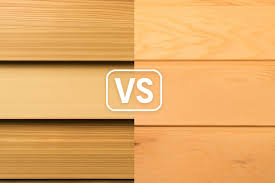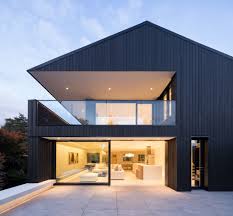
🌲 Western Red Cedar vs Treated Timber: Which Is Better for Fencing?
When building or upgrading a fence, choosing the right timber is one of the most important decisions you’ll make. The most common contenders in the UK market are Western Red Cedar and pressure-treated softwood. But which one actually delivers the best value over time?
In this article, we’ll compare Western Red Cedar vs treated timber fencing across several key factors — including appearance, lifespan, maintenance, cost, and environmental impact — so you can make the smartest long-term choice for your garden or project.
🪵 What Is Pressure-Treated Timber?
Pressure-treated timber is usually a fast-grown softwood like pine or spruce, infused with chemical preservatives to resist moisture, decay, and insects. It’s a budget-friendly option, widely available from UK timber merchants.
While it performs better than untreated wood, it still has some natural limitations — particularly when exposed to constant outdoor conditions.
🌲 What Is Western Red Cedar?
Western Red Cedar is a naturally durable softwood sourced primarily from Canada’s sustainably managed forests. Unlike treated wood, cedar doesn’t rely on artificial preservatives. Its rich oil content makes it inherently resistant to rot, decay, and insect damage — even without treatment.
At Red Cedar Retail, all our fencing panels are crafted from PEFC-certified Canadian Western Red Cedar, offering a superior combination of performance, beauty, and sustainability.
🔎 Side-by-Side Comparison
| Feature | Western Red Cedar | Treated Timber |
|---|---|---|
| Durability | Naturally rot- & insect-resistant | Chemically treated for resistance |
| Lifespan | 20–30 years (even untreated) | 10–15 years (treated) |
| Maintenance | Low – doesn’t need chemical sealants | Needs regular treatment to prevent decay |
| Appearance | Warm reddish-brown, smooth-grained | Greenish/yellow tinge, coarse-grained |
| Stability | Minimal warping or shrinking | Can crack, twist, or split over time |
| Eco-Friendly | 100% natural, no toxins | Contains chemical preservatives |
| Cost | Higher upfront, better long-term value | Lower upfront, higher upkeep cost |
🧱 Aesthetics: Appearance That Lasts
Western Red Cedar is prized by architects and landscapers for its rich colour and fine grain. It delivers a premium, polished look — especially in slatted and planed panel designs. As it ages, cedar develops a beautiful silver-grey patina.
Treated timber, on the other hand, starts out greenish or pale yellow and tends to fade unevenly. Over time, it can splinter, crack, and show signs of warping — especially if not maintained with sealants or stains.
✅ Winner: Western Red Cedar
🛠 Maintenance and Longevity
Western Red Cedar is a set-and-forget option. It doesn’t require painting, sealing, or ongoing chemical treatments. Just install it and let it do its job — or apply a UV-protective oil if you want to retain its colour.
Treated timber needs more upkeep. It should be resealed every 1–2 years to maintain resistance to moisture and fungal decay.
✅ Winner: Western Red Cedar
🌦 Durability and Weather Resistance
With its natural oils, Western Red Cedar performs excellently in wet, windy, and coastal environments. It resists rot and insects even when cut, nailed, or exposed.
Treated softwood can lose its protective value once it’s drilled or trimmed, and is more prone to checking (splitting) as it dries and ages.
✅ Winner: Western Red Cedar
🌍 Environmental Impact
Our Western Red Cedar comes from PEFC-certified Canadian forests, harvested under strict sustainability standards. It’s a non-toxic, biodegradable timber that won’t leach chemicals into the soil.
In contrast, treated timber is infused with copper and synthetic preservatives, which may pose a risk to pets, gardens, or groundwater over time.
✅ Winner: Western Red Cedar
💷 Upfront Cost vs Long-Term Value
Yes, Western Red Cedar fencing panels cost more upfront — typically 2x to 3x the price of treated timber. However, the lifespan, durability, and reduced maintenance often make it cheaper over 20 years.
In short: spend more now, save later.
✅ Winner (long term): Western Red Cedar
🧩 When Should You Choose Treated Timber?
Treated timber may still be a good option if:
-
You need a temporary or short-term fence
-
Budget is your primary constraint
-
Appearance and maintenance aren’t high priorities
🏆 Final Verdict: Which Is Better?
If you’re investing in a long-lasting, low-maintenance, and visually appealing fence, Western Red Cedar is hands-down the superior material. It’s more durable, more sustainable, and simply looks better in premium landscaping.
At Red Cedar Retail, we offer a full range of:
Each panel is crafted from 18×44mm smooth-planed Red Cedar slats for superior quality and performance.
📦 Ready to Build a Fence That Lasts?
Explore our Western Red Cedar fencing range, request a custom quote, or contact us for help choosing the right panel size.


Hi, this is a comment.
To get started with moderating, editing, and deleting comments, please visit the Comments screen in the dashboard.
Commenter avatars come from Gravatar.